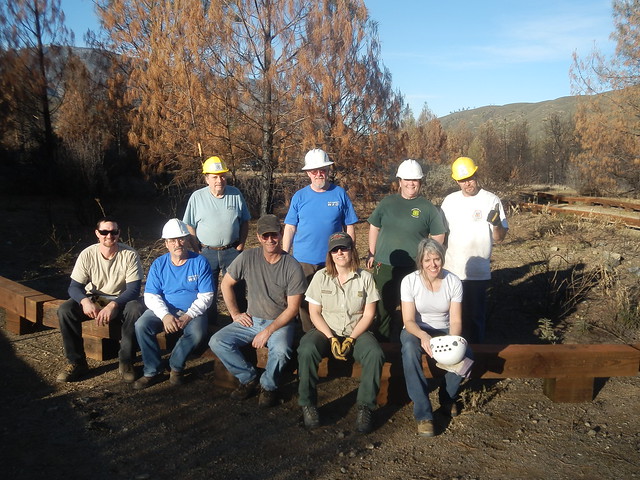
Each year, severe wildfires ravage forests across the country, damaging ecosystems, infrastructure and recreation facilities, which are often in need of repair before they can be safely reopened. The 2018 Mendocino Complex Fire--one of the worst in California’s history--devastated more than 459,000 acres, including 288,000 acres of the Mendocino National Forest. That damage meant a lot of work to restore what was lost.
Part of that work involved restoring trails for off-highway vehicle (OHV) use.
“When I first saw the damage that the wildfire had caused, it was overwhelming to think about the work ahead of us,” said Paige Makowski, a recreation technician on the Mendocino National Forest and an avid off-highway vehicle enthusiast.
Makowski witnessed similar damage during her 10-year Forest Service career. And each time, she said, the agency and its partners have risen to the challenge.
“We had a fire in 2012. Volunteers and our partners stepped up and worked to repair the damage so that we could reopen,” said Makowski recalling the aftermath of the 2012 Mill Fire, which burned nearly 30,000 acres. “It was remembering how our friends and partners were there to help that made me hopeful.”
That experience served her well in 2018. During the initial stages of volunteer and partner coordination after the Mendocino Fire, she called upon a vast network of personal and professional connections. That community, a combination of groups, clubs, partners and friends, have assisted the Forest Service in maintaining trails for years. Together, they went to work again, restoring and removing debris and downed trees from the trails.
“Downed trees can cause an unexpected amount of damage to trails,” said Makowski, “The debris makes the trails impassable, and some visitors then make new trails around the obstruction, causing further damage.”
Not only did they volunteer their time and skills, but their personal vehicles and tools as well. Makowski and her team were able to clean, repair and reopen 163 miles of trail—ahead of schedule.
For her part, Makowski credits the forest’s OHV partners and the volunteers.
“The OHV groups that use the trails appreciate them, and know the work that is involved in maintaining them,” said Makowski, “They know without volunteer hours the work couldn’t get done, and without their support the trails would not be in the condition they are today.”
Valley Climbers Motorcycle Club president Brad Bradshaw attested to a strong relationship with the Forest Service and added that people like Paige Makowski and their commitment make that connection stronger.
“She’s not just a partner, she’s a friend,” Bradshaw said. “She and one of the other advisors came down for a club meeting in Napa, and that’s a two-hour drive. For them to take time out of their day to spend time with the club is a big showing of wanting to work with us.”

Makowski faced one of her most difficult years in 2020, when the pandemic put a strain on volunteer engagement. Despite the challenge, Makowski and the off-highway vehicle groups continue to maintain trails, improve safety and reduce wildfire risk on the Mendocino.
Makowski’s experience is not unique in the Forest Service. More than 110,000 people gave almost 5 million hours of their time to volunteer on national forests and grasslands in 2019. Altogether, their work was valued at $122 million.
How can you volunteer?
- Contact your national forest or grassland.
- Search for partner organizations who work on national forests or grasslands.
- Learn about volunteering as Forest Service steward.
- Create a profile and search for opportunities on public lands at Volunteer.gov.
